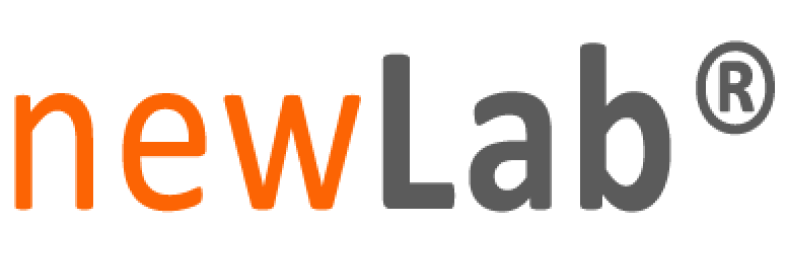Updated June 2025
Innovation has always played a central role in the food processing industry’s competitive strategy. Today, however, it’s no longer optional. The sector is navigating intensified challenges, including tighter food safety regulations, heightened demand for healthier and more sustainable products, and the ongoing imperative to develop scalable solutions for a growing global population.
Within this context, New Product Development (NPD) has become a mission-critical capability. In particular, the testing and piloting phases—often overlooked—are now emerging as pivotal levers for accelerating time-to-market and differentiating in an increasingly complex market.
In this article, we explore how testing and piloting in the NPD process can either create costly delays or, when well-executed, unlock competitive advantage. We’ll also examine how modern cloud platforms are transforming how food companies manage these vital activities.
Current Trends Reshaping the Food Industry
Over the past decade, food production has become one of the most heavily regulated global industries, with oversight bodies such as the FDA (U.S.), EFSA (Europe), and CFIA (Canada) ramping up their scrutiny of food safety and ingredient compliance. In 2024 alone, the FDA reviewed over 9,000 ingredient safety notifications—an all-time high.
Consumers, especially in high-income markets, are demanding more transparency, nutritional value, ethical sourcing, and minimal environmental impact. Organic products, once niche, now represent over 20% of food retail growth in the U.S. and Europe. Meanwhile, hunger and malnutrition persist in low-income regions, further exacerbated by climate-related disruptions to agriculture.
The food ecosystem is under mounting pressure, driven by four dominant trends:
- Transparency: Today’s consumers expect full visibility into how and where food is made. According to FMI’s 2024 transparency report, 76% of shoppers say transparency influences their purchase decisions.
- Traceability: End-to-end traceability—from ingredient sourcing to finished product—is now critical not only for consumer trust but also for regulatory compliance. Food tech leaders are increasingly investing in blockchain and real-time supply chain platforms to enable this.
- Sustainability: A growing share of consumers (over 70% per a recent McKinsey survey) now say sustainability influences their buying habits. Climate-smart sourcing, packaging reduction, and low-carbon manufacturing are top priorities for food R&D teams.
- Personalization: The demand for personalized nutrition is surging. In 2025, it’s projected to be a $24B market globally. More than 60% of global consumers are seeking products aligned to their specific dietary preferences, health goals, or values.
Together, these trends are forcing food companies to shift from incremental innovation to systemic transformation—requiring agile R&D operations and smarter NPD strategies.
Why the NPD Process Needs to Evolve
Traditionally, food companies have lagged behind in R&D intensity compared to other industries. But the complexity of today’s market is changing that. The standard NPD model—idea generation, business case development, testing, and product launch—remains relevant, but must be adapted for food-specific constraints.
Key differences include:
- Ingredient perishability and seasonality
- Volatility in sourcing due to climate or geopolitical factors
- Stringent safety and traceability requirements
- Consumer expectations of ethical and environmental responsibility
According to a 2023 study in Foods (MDPI), effective NPD in food must now also account for:
- Seasonal ingredient availability
- Regional sourcing and local tastes
- Scale-up complexity from lab to plant
- Lifecycle environmental impact (with design decisions determining up to 80% of a product’s footprint)
Testing—whether for feasibility, sensory validation, regulatory alignment, or process scale-up—is central to all of this. Yet testing often involves multiple functions, bespoke facilities, and strict compliance standards, which together consume a significant portion of NPD time and budget.
When under-resourced or poorly structured, this stage becomes a bottleneck—delaying launches, increasing risk, and eroding competitive advantage.
The Case for a Cloud-Based NPD Platform
Traditional enterprise tools (ERP, PLM, LIMS) often lack the agility needed for dynamic NPD environments. They’re complex, expensive, and not built for experimentation. Conversely, relying on spreadsheets and email chains introduces risk, silos, and poor traceability.
Cloud platforms purpose-built for NPD in food offer a better alternative. These systems centralize data, streamline collaboration, and adapt easily to evolving needs.
Must-have features include:
- Unified project portal for submitting and tracking assay requests across marketing and R&D teams.
- Collaborative experiment notebooks for designing and documenting all relevant parameters, materials, and methods.
- Automated workflow engine to ensure consistency, compliance, and traceability across all assay steps.
- Integrated inventory planning, enabling accurate material tracking for test runs.
- No-code workflow builder for R&D and process engineers to quickly adjust assay procedures.
- Seamless integration with equipment, lab systems, and external databases—reducing manual entry and error risk.
- Mobile access for field and plant-floor usability.
- Centralized knowledge base with advanced analytics and dashboards for performance tracking and insights.
Such platforms have already proven their value: food companies adopting digital NPD tools report up to 30% faster time-to-market and significantly reduced rework costs.
Key Takeaways for R&D Leaders
- Innovation in the food industry is no longer optional. Trends like sustainability, traceability, and personalization are rewriting the rules.
- Testing and piloting are vital—and often under-optimized—phases in the NPD lifecycle. When mishandled, they introduce delays and risk.
- Investing in a modern, cloud-based NPD platform purpose-built for food can transform your testing workflows into a competitive advantage by boosting speed, agility, and compliance.
Want to see how newLab® helps food and ingredient innovators streamline product development?



